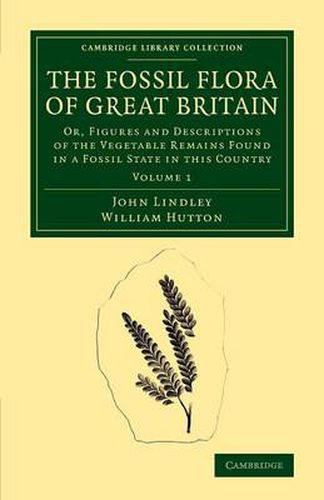Readings Newsletter
Become a Readings Member to make your shopping experience even easier.
Sign in or sign up for free!
You’re not far away from qualifying for FREE standard shipping within Australia
You’ve qualified for FREE standard shipping within Australia
The cart is loading…






Employed early on in his career by Sir Joseph Banks, the botanist John Lindley (1799-1865) went on to conduct important research on the orchid family and also recommended that Kew Gardens should become a national botanical institution. This pioneering three-volume work of palaeobotany, first published between 1831 and 1837, catalogues almost 300 species of fossil plants from the Pleistocene to the Carboniferous period. The geologist and palaeontologist William Hutton (1797-1860), with whom Lindley collaborated, was responsible for collecting the fossil specimens from which the 230 plates were drawn. The first serious attempt at organising and interpreting the evidence of Britain’s primeval plant life, this resource is notable also for its prefatory discussion of topics such as coal seams and prehistoric climate. Volume 1 opens with a context-setting introduction and list of genera, followed by the descriptions of plates 1-79.
$9.00 standard shipping within Australia
FREE standard shipping within Australia for orders over $100.00
Express & International shipping calculated at checkout
Employed early on in his career by Sir Joseph Banks, the botanist John Lindley (1799-1865) went on to conduct important research on the orchid family and also recommended that Kew Gardens should become a national botanical institution. This pioneering three-volume work of palaeobotany, first published between 1831 and 1837, catalogues almost 300 species of fossil plants from the Pleistocene to the Carboniferous period. The geologist and palaeontologist William Hutton (1797-1860), with whom Lindley collaborated, was responsible for collecting the fossil specimens from which the 230 plates were drawn. The first serious attempt at organising and interpreting the evidence of Britain’s primeval plant life, this resource is notable also for its prefatory discussion of topics such as coal seams and prehistoric climate. Volume 1 opens with a context-setting introduction and list of genera, followed by the descriptions of plates 1-79.